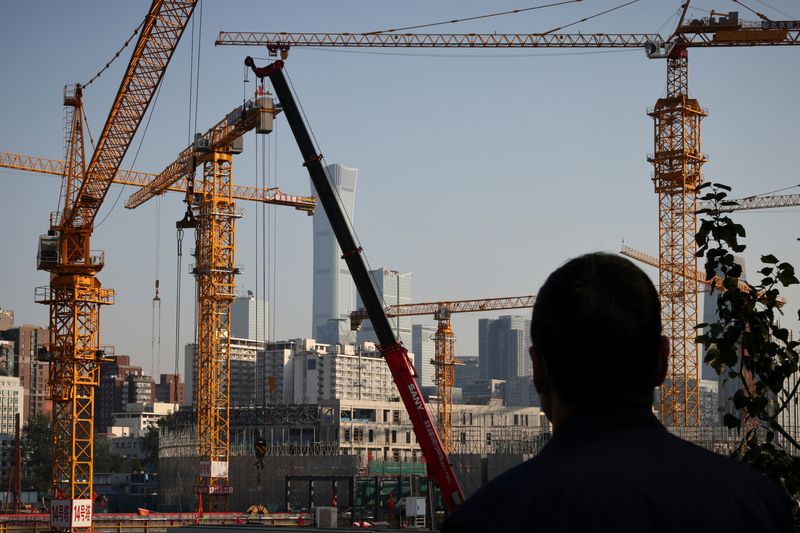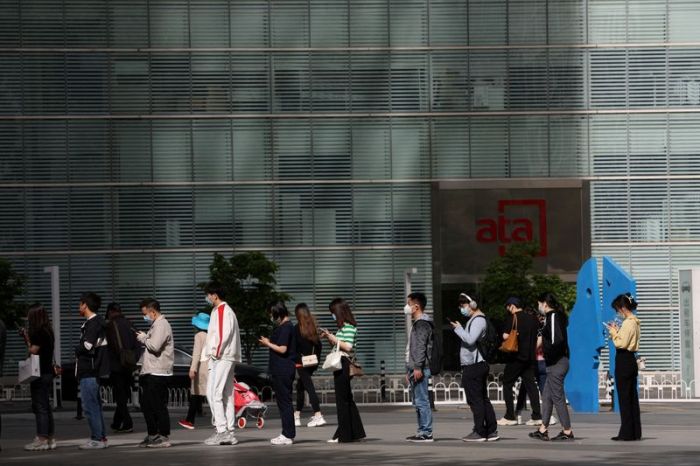BEIJING (Reuters) -Profits at China’s industrial firms grew at a faster pace in March from a year earlier, data showed on Wednesday, despite the negative impact on the economy from COVID-19 outbreaks and the Ukraine war.
Firms’ profits rose 12.2% on year ago in March, the fastest growth in five months, according to Reuters’ calculations based on data from the National Bureau of Statistics (NBS).
The pace of profit growth accelerated from the 5% over January-February.
The growth was partly shored up by wider profit margins in the mining industry while tax cuts helped narrow the earnings gap between upstream and downstream firms, said Ma Hanping, a researcher at CITIC Securities.
In the first quarter, mining industry profit margins were at 24.53%, the highest since February 2019.
“However, the impact of COVID outbreaks on the demand in some industries and the logistics sector were not fully reflected in the March data,” Ma said. “As the export orders may shift to overseas markets in the long run and the growth of factory gate inflation slows, industrial profits of Chinese firms are facing downward pressure.”
For January-March, industrial firms’ profits rose 8.5% year-on-year to 1.96 trillion yuan ($298.97 billion), down 3.8 percentage points compared with the last quarter in 2021, according to the NBS.
Greater imported inflation and domestic COVID outbreaks brought challenges to the industrial economy and led to rising difficulties for output and operations, Zhu Hong, senior NBS statistician, said in a statement.
Chinese shares rose on Wednesday, with stocks of minor metals and electrical equipment leading gains.
The world’s second-largest economy expanded 4.8% in the first quarter from a year earlier, beating expectations and quickening from 4.0% in the fourth quarter, data earlier this month showed.
However, consumption, real estate and exports were hit hard in March by anti-COVID measures, sparking concerns of rising recession risks.
Analysts warn of a worsening trade outlook in April, noting severe bottlenecks in factory operations, road transportation and port congestion as a result of restrictions ordered to counter the spread of COVID.
Shanghai, China’s main financial hub, has been in lockdown that has lasted a month, and by late April Beijing was reporting dozens of COVID cases daily. On Monday, Beijing’s city government extended mandatory testing to cover a total of 20 million people.
Nomura analysts said in a note on Monday that 46 cities were implementing full or partial lockdowns, accounting for 24.3% of China’s population and 35.1% of China’s GDP.
Meanwhile, geopolitical risks, including Russia’s attack on Ukraine, have created persistent uncertainty over global supply chains and disrupted commodities markets, causing more problems for manufacturing.
China’s central bank said this week it would step up prudent monetary policy support, especially to small firms hit by COVID-19.
The industrial profit data covers firms with annual revenues of over 20 million yuan from their main operations.
($1 = 6.5558 Chinese yuan)
(Reporting by Ellen Zhang, Shuyan Wang and Ryan Woo; Editing by Simon Cameron-Moore and Sam Holmes)

























